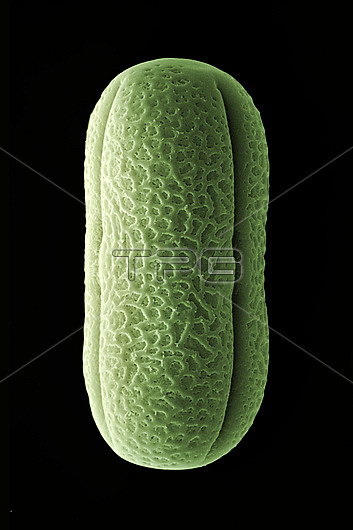
Scanning electron micrograph of a pollen grain of the garden pea, Pisum sativum. Pollen is produced by flowers of higher plants to convey the male gametes to the female stigma, borne by insects or the wind. The outer layer of the pollen (the exine) contains sporopollenin, a complex polymer - also present in spores of lower plants - so chemically inert that it can persist unchanged for millions of years in sediments; long after its living contents have disappeared. The exine of a pollen grain is, in effect, a very small (30 microns long, here) indestructible porous capsule.Purified, such microcapsules can be filled with pharmaceuticals to make a "slow release" version of a drug such as a painkiller, or hold a vaccine for oral delivery. Pea pollen happens to resemble a gelatin capsule in shape; in practice, moss spores are the most common source of sporopollenin capsules for medical use
| px | px | dpi | = | cm | x | cm | = | MB |
Details
Creative#:
TOP26709397
Source:
達志影像
Authorization Type:
RM
Release Information:
須由TPG 完整授權
Model Release:
N/A
Property Release:
N/A
Right to Privacy:
No
Same folder images:

 Loading
Loading